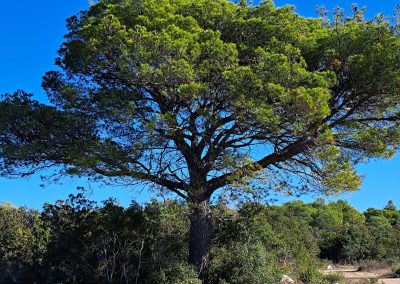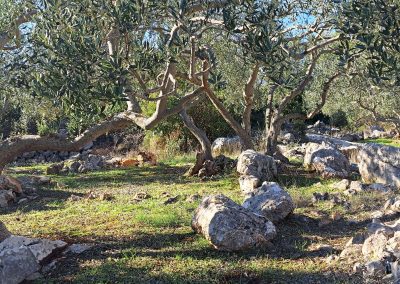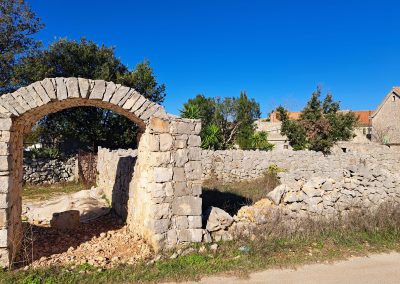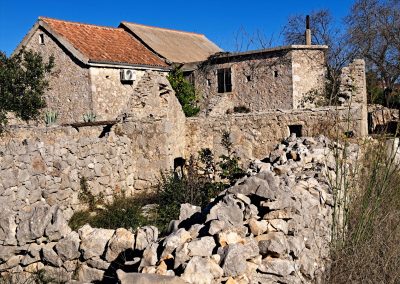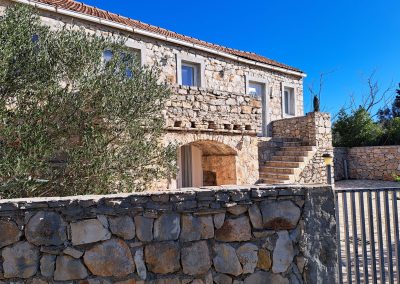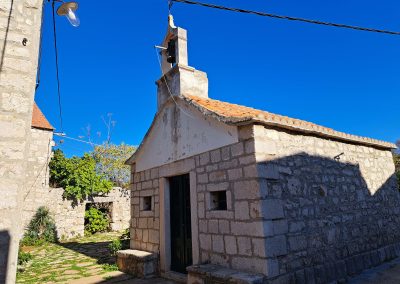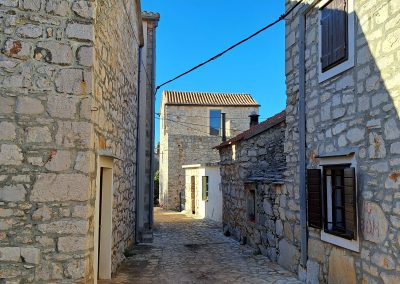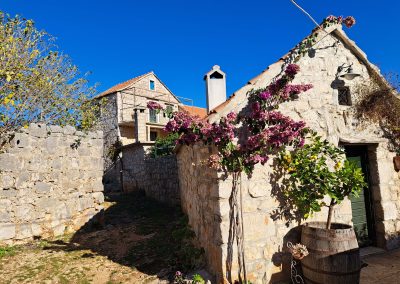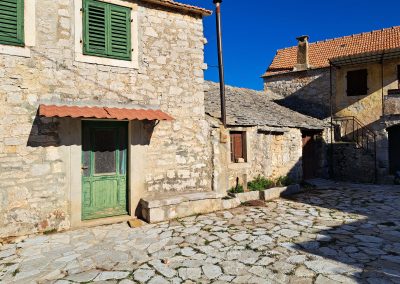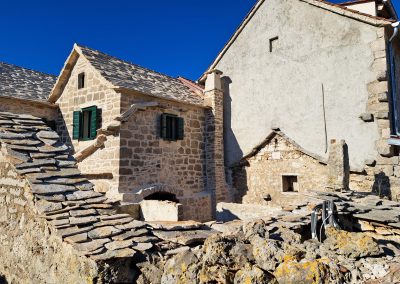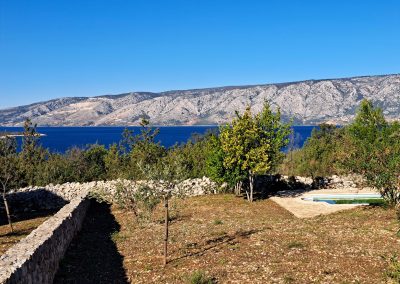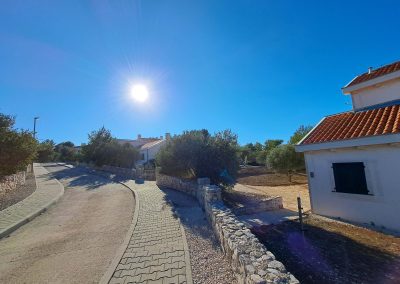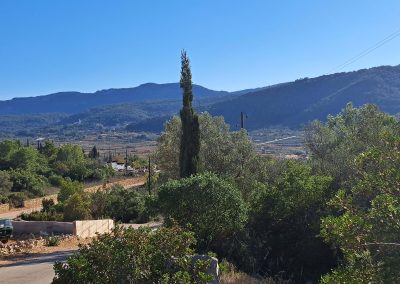Rudina, island of Hvar
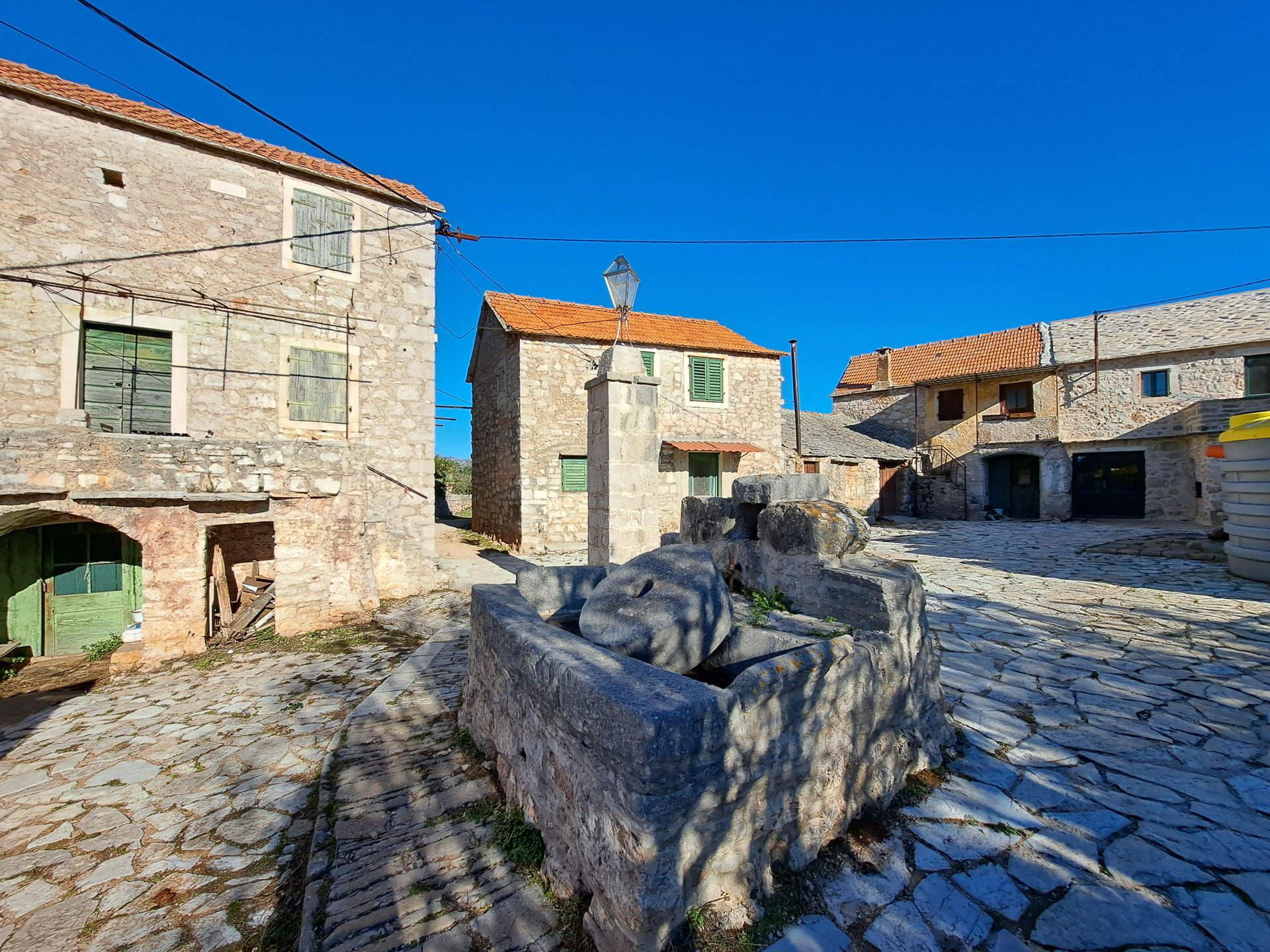
Meet Rudine
On the northern side, 2 km away and 80 meters above Stari Grad, are Velike and Male Rudine. These are two small rural entities 500 meters apart from each other.
Velike Rudine are not significantly larger but are older. They were certainly established in the 15th century and are mentioned from the 14th century as shepherds’ huts for nobility, similar to Grablje and Brusje. The surname Dulčić originates from Brusje, which is why Velike Rudine are also known as Dulčić’s Rudine, while Male Rudine are known as Šoljan’s or “Plamusi” because they were established in the 17th century by settlers from Gdinj.
Velike Rudine have the Church of St. Roch and a school, and they are more compactly built on a smaller area, while Male Rudine only have a chapel dedicated to St. Roch.
On the ridge of the Kabal peninsula, Velike Rudine face the side of the Stari Grad bay, while Male Rudine are on the slopes facing the Hvar Channel, opposite Bol on Brač.
In Male Rudine, on the slopes towards the coves and beaches, a small settlement called “Hvar Villas” with swimming pools has been built. It takes about ten minutes to walk to the Rudine beaches: Žukova, Lisna, Duboka, and Trovna.
The nearest beach is Žukova, where there are two small fishing huts that were used by the fishermen of Stari Grad when they fished outside their bay in the Hvar Channel, on the other side of the Kabal peninsula. The fish were often carried in baskets on their heads from Žukova to Stari Grad, 2.5 km away. By sea, the boats would have to travel about 15 km, but then they would need to return to their “posts,” so especially boats with row crews organized the land transport of fish to Stari Grad. There was also a fish canning factory in Rudine.
Around 1900, Rudine had 337 inhabitants, and today there are 79. The buildings and ruins are protected cultural heritage.
